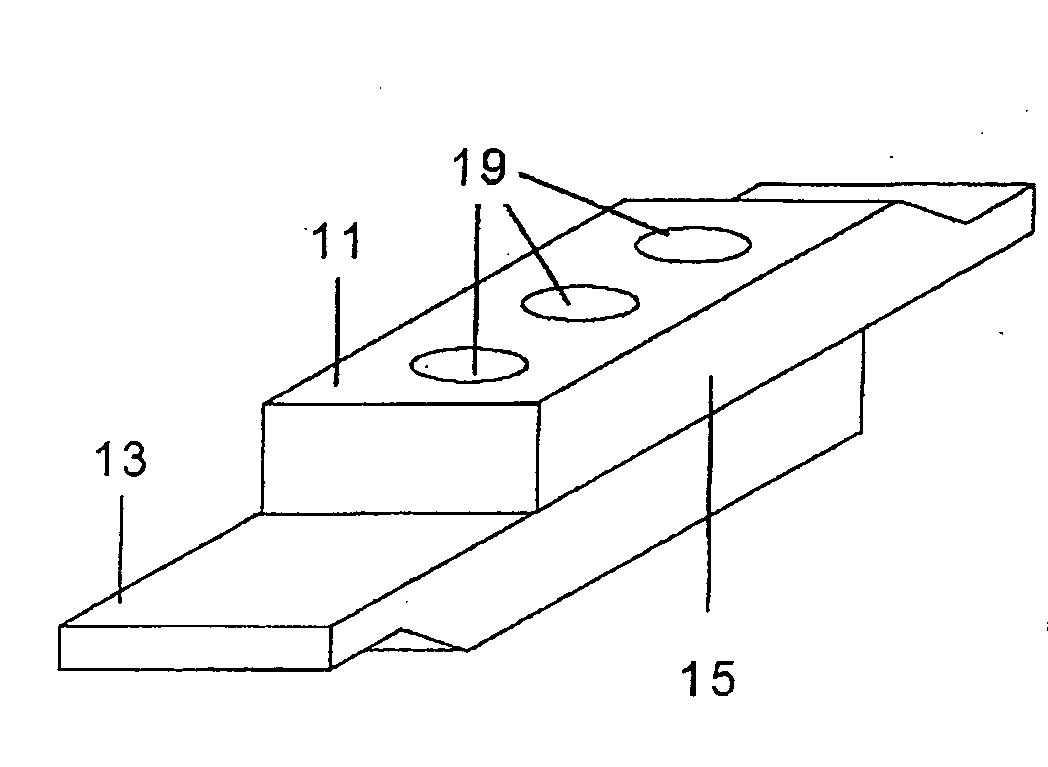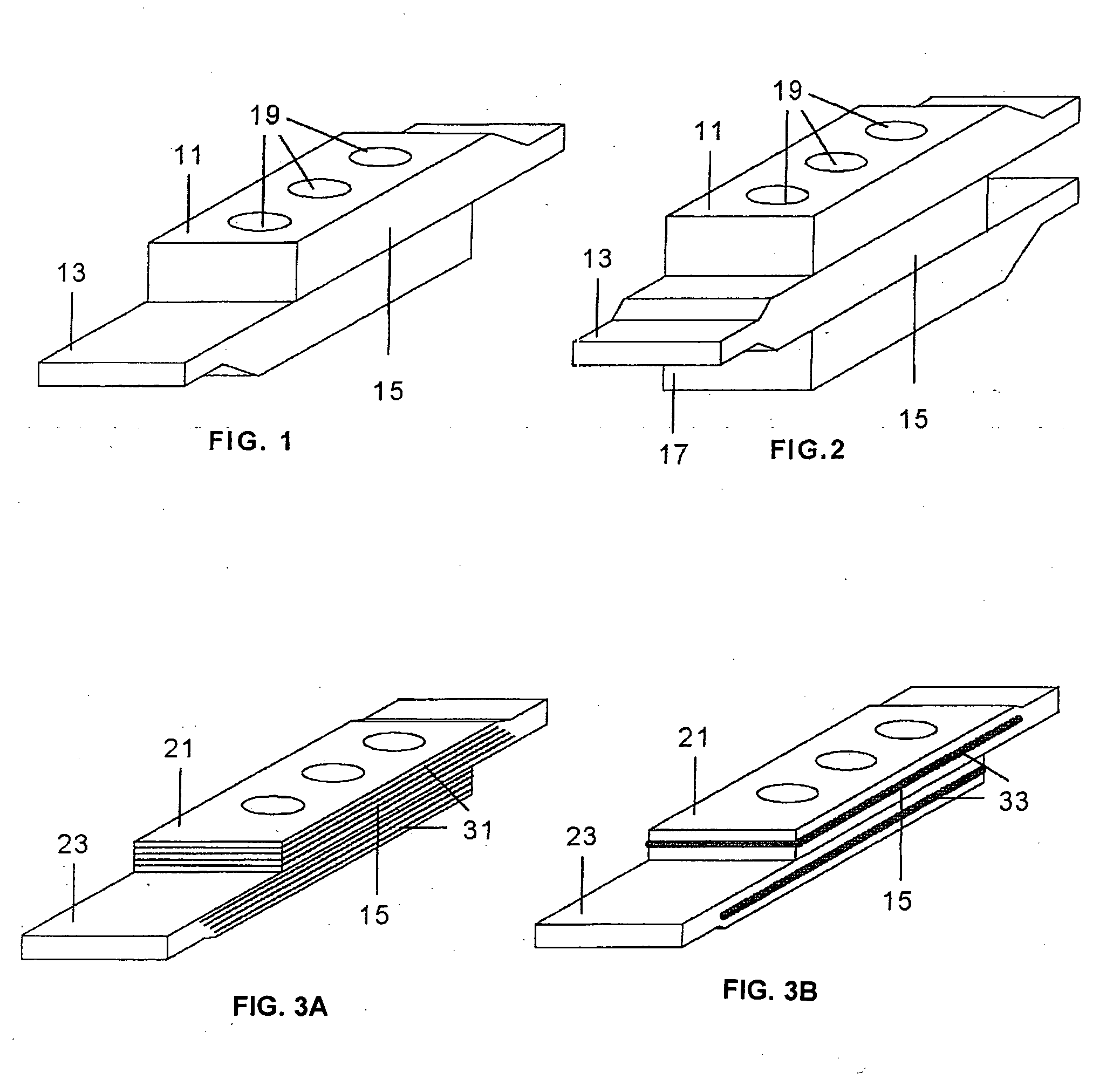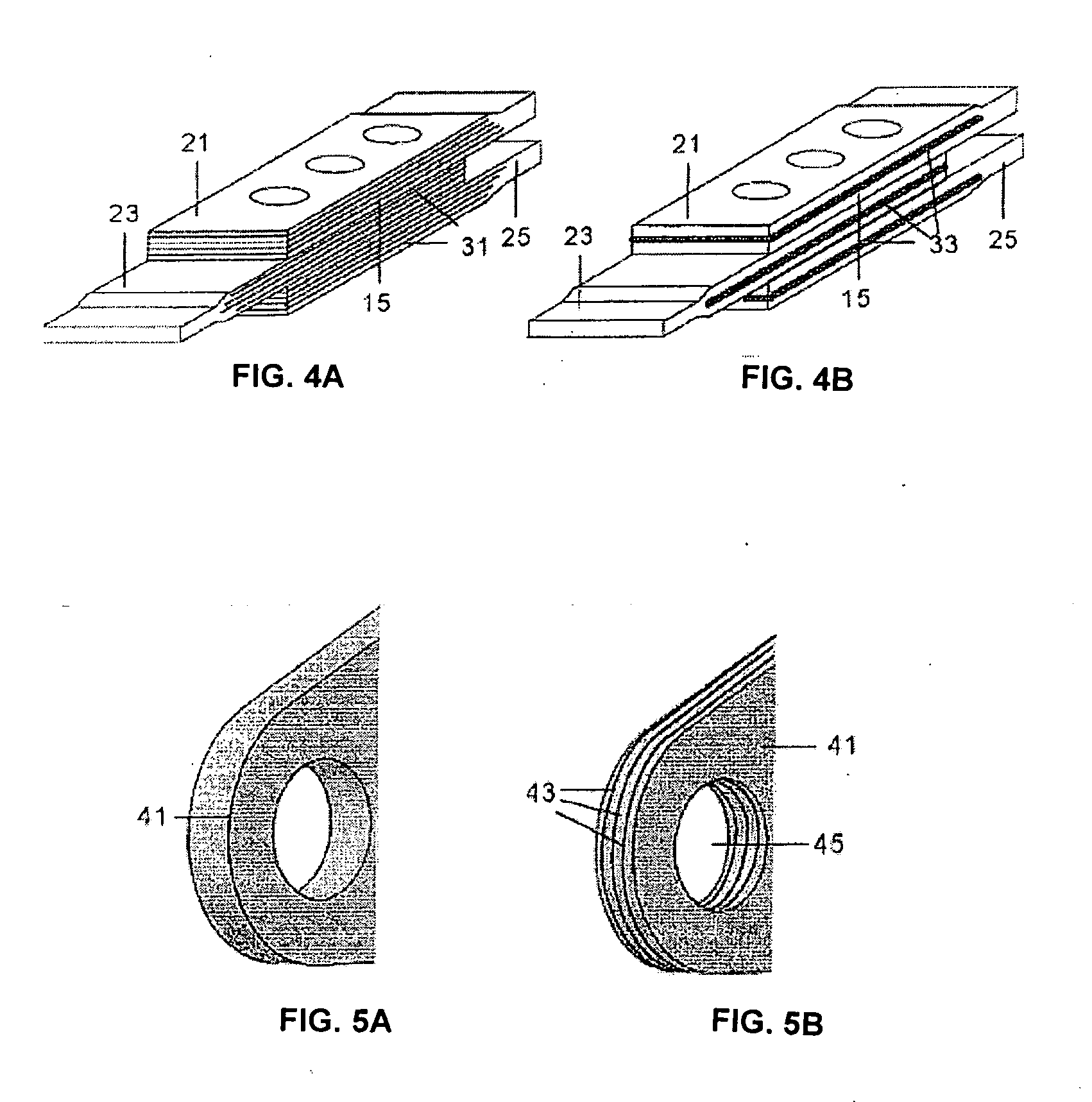Metallic local reinforcement for heavy loaded joints of composite components
a local reinforcement and composite component technology, applied in the direction of transportation and packaging, mechanical equipment, other domestic objects, etc., can solve the problems of not being able to use hybrid materials as local reinforcement in heavy-load lap joints, unable to meet the requirements of surface treatment, and not being able to meet the requirements of high-level volatile organic compounds (voc), so as to improve the performance of carbon composite joints, reduce the structural weight and thickness of bolted joints, and reduce the effect of weight and thickness
- Summary
- Abstract
- Description
- Claims
- Application Information
AI Technical Summary
Benefits of technology
Problems solved by technology
Method used
Image
Examples
Embodiment Construction
[0023] In known heavy loaded joints between two composite parts 11, 13 (see FIG. 1) both parts 11, 13 are thickened in the joint area 15 with additional plies until the required strength is achieved resulting in a reinforced joint area 15.
[0024] Similarly in heavy loaded joints between three composite parts 11, 13, 17 (see FIG. 2) the three parts 11, 13, 17 are thickened in the joint area 15 with additional plies until the required strength is achieved resulting in a reinforced joint area 15.
[0025] In both cases fastening means such as bolts (not shown) will be used through holes 19 drilled in each part 11, 13, 17 in the zones to be joined.
[0026] In a preferred embodiment of the invention shown in FIGS. 3a and 4a, all parts 21, 23; 21, 23, 25 been joined have titanium foils 31 interleaved as reinforcement into the carbon fibre laminates.
[0027] In another preferred embodiment of the invention shown in FIGS. 3b and 4b, all parts 21, 23; 21, 23, 25 have one titanium plate 33 embedd...
PUM
| Property | Measurement | Unit |
|---|---|---|
| Fraction | aaaaa | aaaaa |
| Fraction | aaaaa | aaaaa |
| Fraction | aaaaa | aaaaa |
Abstract
Description
Claims
Application Information
 Login to View More
Login to View More - R&D
- Intellectual Property
- Life Sciences
- Materials
- Tech Scout
- Unparalleled Data Quality
- Higher Quality Content
- 60% Fewer Hallucinations
Browse by: Latest US Patents, China's latest patents, Technical Efficacy Thesaurus, Application Domain, Technology Topic, Popular Technical Reports.
© 2025 PatSnap. All rights reserved.Legal|Privacy policy|Modern Slavery Act Transparency Statement|Sitemap|About US| Contact US: help@patsnap.com



